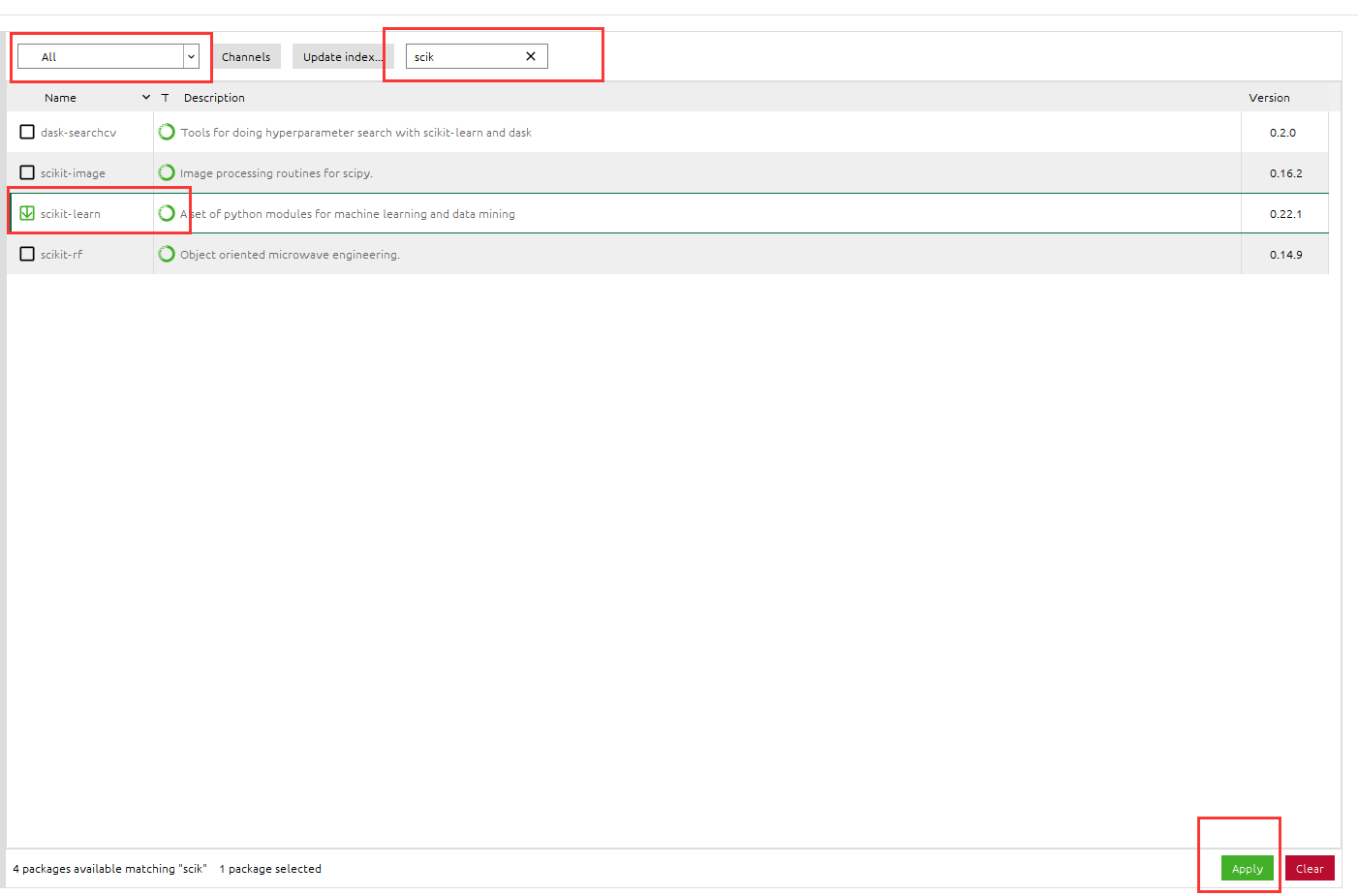下载地址:http://t.cn/Rf8GeUq
先安装sklearn库,anaconda在paddle环境中搜索scikit-learn,安装即可。
import numpy as np from matplotlib import colors #画图 from sklearn import svm from sklearn.svm import SVC from sklearn import model_selection import matplotlib.pyplot as plt import matplotlib as mpl def iris_type(s): it = {b'Iris-setosa':0, b'Iris-versicolor':1, b'Iris-virginica':2} return it[s] #加载数据 data_path='D:/home/aistudio/data/data5420/iris.data' #数据文件的路径 data = np.loadtxt(data_path, #数据文件路径 dtype=float, #数据类型 delimiter=',', #数据分隔符 converters={4:iris_type}) #将第5列使用函数iris_type进行转换 #print(data) #data为二维数组,data.shape=(150, 5) #print(data.shape) #数据分割 x, y = np.split(data, #要切分的数组 (4,), #沿轴切分的位置,第5列开始往后为y axis=1) #代表纵向分割,按列分割 x = x[:, 0:2] #在X中我们取前两列作为特征,为了后面的可视化。x[:,0:4]代表第一维(行)全取,第二维(列)取0~2 #print(x) x_train,x_test,y_train,y_test=model_selection.train_test_split(x, #所要划分的样本特征集 y, #所要划分的样本结果 random_state=1, #随机数种子 test_size=0.3) #测试样本占比 #**********************SVM分类器构建************************* def classifier(): #clf = svm.SVC(C=0.8,kernel='rbf', gamma=50,decision_function_shape='ovr') clf = svm.SVC(C=0.5, #误差项惩罚系数,默认值是1 kernel='linear', #线性核 kenrel="rbf":高斯核 decision_function_shape='ovr') #决策函数 return clf # 2.定义模型:SVM模型定义 clf = classifier() #***********************训练模型***************************** def train(clf,x_train,y_train): clf.fit(x_train, #训练集特征向量 y_train.ravel()) #训练集目标值 #***********************训练模型***************************** def train(clf,x_train,y_train): clf.fit(x_train, #训练集特征向量 y_train.ravel()) #训练集目标值 # 3.训练SVM模型 train(clf,x_train,y_train) #**************并判断a b是否相等,计算acc的均值************* def show_accuracy(a, b, tip): acc = a.ravel() == b.ravel() print('%s Accuracy:%.3f' %(tip, np.mean(acc))) def print_accuracy(clf,x_train,y_train,x_test,y_test): #分别打印训练集和测试集的准确率 score(x_train,y_train):表示输出x_train,y_train在模型上的准确率 print('trianing prediction:%.3f' %(clf.score(x_train, y_train))) print('test data prediction:%.3f' %(clf.score(x_test, y_test))) #原始结果与预测结果进行对比 predict()表示对x_train样本进行预测,返回样本类别 show_accuracy(clf.predict(x_train), y_train, 'traing data') show_accuracy(clf.predict(x_test), y_test, 'testing data') #计算决策函数的值,表示x到各分割平面的距离 print('decision_function:\n', clf.decision_function(x_train)) # 4.模型评估 print_accuracy(clf,x_train,y_train,x_test,y_test) def draw(clf, x): iris_feature = 'sepal length', 'sepal width', 'petal lenght', 'petal width' # 开始画图 x1_min, x1_max = x[:, 0].min(), x[:, 0].max() #第0列的范围 x2_min, x2_max = x[:, 1].min(), x[:, 1].max() #第1列的范围 x1, x2 = np.mgrid[x1_min:x1_max:200j, x2_min:x2_max:200j] #生成网格采样点 grid_test = np.stack((x1.flat, x2.flat), axis=1) #stack():沿着新的轴加入一系列数组 print('grid_test:\n', grid_test) # 输出样本到决策面的距离 z = clf.decision_function(grid_test) print('the distance to decision plane:\n', z) grid_hat = clf.predict(grid_test) # 预测分类值 得到【0,0.。。。2,2,2】 print('grid_hat:\n', grid_hat) grid_hat = grid_hat.reshape(x1.shape) # reshape grid_hat和x1形状一致 #若3*3矩阵e,则e.shape()为3*3,表示3行3列 cm_light = mpl.colors.ListedColormap(['#A0FFA0', '#FFA0A0', '#A0A0FF']) cm_dark = mpl.colors.ListedColormap(['g', 'b', 'r']) plt.pcolormesh(x1, x2, grid_hat, cmap=cm_light) # pcolormesh(x,y,z,cmap)这里参数代入 # x1,x2,grid_hat,cmap=cm_light绘制的是背景。 plt.scatter(x[:, 0], x[:, 1], c=np.squeeze(y), edgecolor='k', s=50, cmap=cm_dark) # 样本点 plt.scatter(x_test[:, 0], x_test[:, 1], s=120, facecolor='none', zorder=10) # 测试点 plt.xlabel(iris_feature[0], fontsize=20) plt.ylabel(iris_feature[1], fontsize=20) plt.xlim(x1_min, x1_max) plt.ylim(x2_min, x2_max) plt.title('svm in iris data classification', fontsize=30) plt.grid() plt.show() # 5.模型使用 draw(clf,x)
